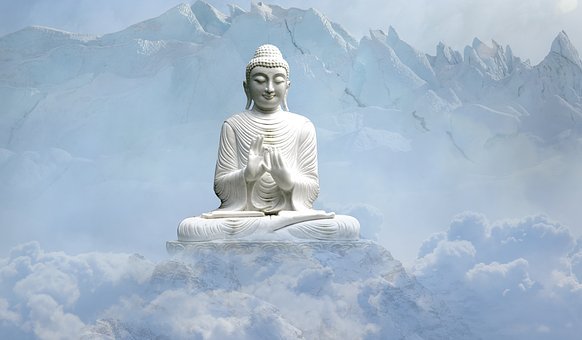Clear skies and snow-capped peaks, but above all the special light of a land where the air is rarefied and nature is the absolute master. The proud faces and welcoming smiles of women and men who with dignity carry on their shoulders the fatigue of a simple and uncomfortable life, made up of work and ancient traditions. And again, between rites and processions, joined hands and sacred places, relics and colorful prayer flags moved by the wind, deep and serene spirituality, emblem of a people with industrious hands and very lofty thoughts, capable of accepting every mystery of existence. as a gift. Han Yuchen’s exhibition “Tibet. Splendor and purity”, scheduled in Rome, at Palazzo Bonaparte from 14 July to 4 September, is a journey into the authenticity and great humanity of the “roof of the world”. The exhibition, which marks the first time in Rome of the Chinese master of contemporary oil painting, presents to the public 40 canvases of various sizes in which Yuchen, with a clear and poetic sign, reveals and pays homage to what he himself defines his ” obsession “: Tibet – with its people, its landscapes and its millenary culture – becomes in the artistic transfiguration a place of the soul, perhaps an unattainable Eden separated from everything, but also an invitation to rediscover lost values, in the constant criticism of a globalized society that is blind and deaf to the most intimate needs of man. Curated by Nicolina Bianchi and Gabriele Simongini, organized by Arthemisia, the exhibition – originally scheduled for spring 2020 and then postponed due to the pandemic – is divided into three sections, Landscapes, Portraits and Spirituality, in which Yuchen’s pictorial mastery is evident , which alternates works with more nuanced features to others characterized by an almost photographic precision. As the curator Gabriele Simongini at ANSA states, “Yuchen’s is an ethical realism that offers an ideal model for a simpler and more spiritual life”, underlining how much his painting reveals on the one hand the careful study “of the European masters of 800, so much so that in some larger canvases one seems to see Gustave Courbet again, but also the influence of his training as a photographer, especially in the cutting and precise composition of some works “. Both in the more nuanced and in the more “photographic” way, Yuchen’s great talent is undoubtedly knowing how to restore authentic moments of real life to the eye of the beholder: in whatever way he decides to paint – his working method is twofold: the paintings are the most “studied” fruit of a detailed photographic campaign, or made live, en plein air – the artist manages to tell reality with an accurate and plausible representation, but also to reveal what is most profound and “immaterial” hides in Tibetan culture. Walking through his works, one is hit by a wave of serenity and strength, of determination and austere sweetness: the representations of indomitable and uncompromising nature, the meticulous details of traditional clothes, ornaments and everyday objects are proof of this. , as well as the choral scenes, so authentic that they also seem to convey the movement, and above all the attention to the expression of the face and the intensity of the gaze in the many portraits exhibited, especially the female ones. (HANDLE).
REPRODUCTION RESERVED © Copyright ANSA

